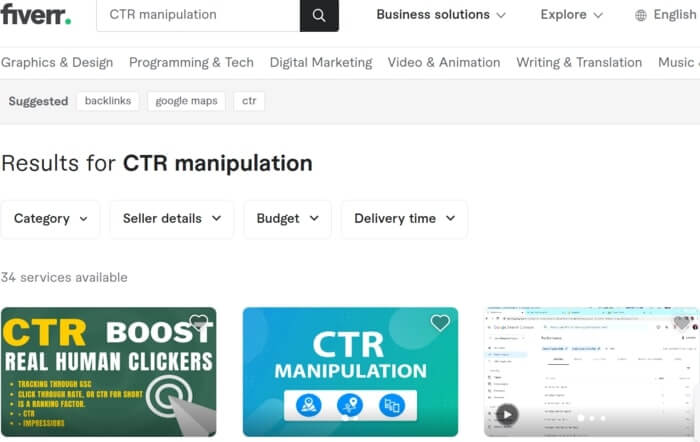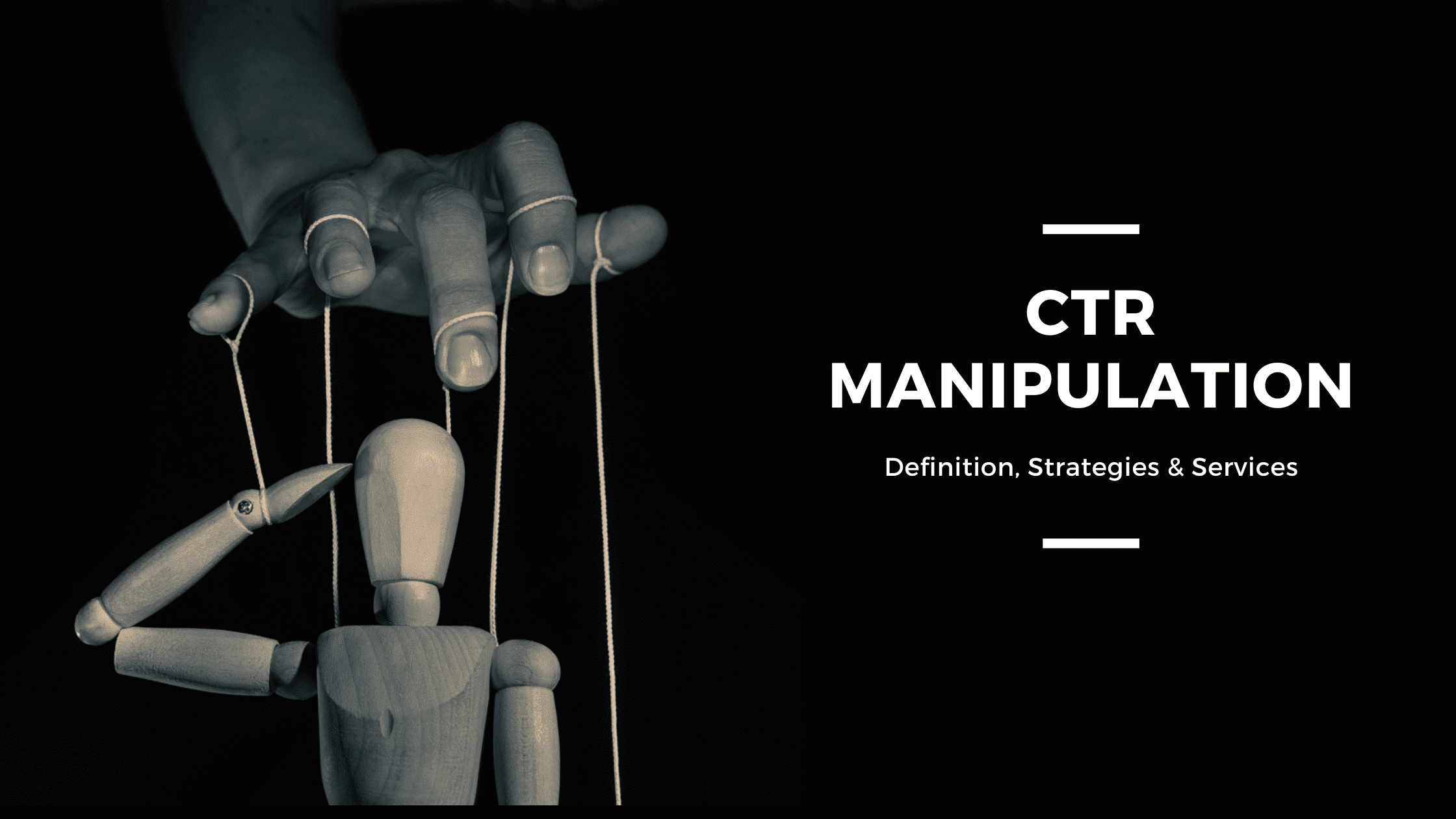Supercharge Your Link Building Efforts with LinkDaddy CTR Manipulation Competence
Supercharge Your Link Building Efforts with LinkDaddy CTR Manipulation Competence
Blog Article
Maximizing Organic Click-Through Rates With CTR Manipulation
The optimization of natural click-through prices (CTR) is a nuanced undertaking that rests on comprehending both user psychology and effective web content discussion. By leveraging critical manipulation strategies, such as incredibly crafted headings and visually engaging components, online marketers can dramatically improve user interaction. However, the landscape is rife with false impressions and oversimplifications regarding what absolutely drives CTR. As we explore the details of these techniques, it ends up being crucial to discern the underlying concepts that can result in continual success in capturing target market attention. What truly sets apart the effective from the inefficient in this essential aspect of digital advertising and marketing?
Comprehending Click-Through Fees
Comprehending click-through rates (CTR) is essential for assessing the effectiveness of internet marketing techniques. CTR gauges the percent of customers who click on a certain web link or ad compared to the total variety of customers who watch it. A greater CTR suggests that the web content is involving and appropriate to the target audience, while a lower CTR might signal a need for optimization.
To compute CTR, split the variety of clicks by the number of impacts and increase by 100. For circumstances, if an ad receives 300 clicks out of 10,000 impressions, the CTR would certainly be 3%. This statistics is critical for evaluating various components of digital advertising and marketing, consisting of seo (SEARCH ENGINE OPTIMIZATION), email projects, and social media sites advertising.
Furthermore, assessing CTR helps online marketers recognize which methods produce the very best outcomes and which require improvement. By concentrating on boosting CTR, organizations can enhance their web content's exposure and efficacy, bring about increased traffic and potential conversions. Understanding the nuances of CTR is foundational for any kind of marketer aiming to maximize their on-line visibility and make best use of return on financial investment (ROI)

The Psychology of User Habits
Individual behavior is significantly affected by mental elements that determine how people interact with on-line web content. Recognizing these aspects is vital for optimizing click-through prices (CTR) in organic search results.
Emotional feedbacks likewise substantially impact individual actions. Material that reverberates mentally can activate a sense of urgency or interest, motivating users to click. Furthermore, social proof-- such as customer evaluations or ratings-- can improve count on and urge involvement, as people commonly seek to the actions of others to notify their own choices.
Additionally, the principle of shortage can drive clicks - CTR Manipulation Service. Limited-time deals or exclusive web content produce a concern of missing out (FOMO), compelling individuals to act quickly. Recognizing these psychological chauffeurs enables marketers to create more compelling content that resonates with their target audience
Effective CTR Manipulation Techniques
Leveraging psychological insights can considerably enhance click-through rates (CTR) through targeted manipulation techniques. One of one of the most reliable approaches is using engaging headings that evoke interest or urgency. Phrasing titles as inquiries or including numbers can bring in even more interest, triggering users to click.
Another strategy entails enhancing meta descriptions to create a feeling of importance and immediacy. By plainly describing the benefits or services supplied in the material, you can engage potential viewers and convince them to click. In addition, utilizing power words-- such as "unique," "confirmed," or "totally free"-- can improve Read Full Article the appeal of your web content.
Visual elements additionally play a critical role. Integrating appealing images or thumbnails can attract individuals in and boost CTR. A/B testing different visuals can assist identify which photos resonate ideal with your audience.
Last but not least, making sure that your content assures deliverable value brings about higher CTR. When users view that clicking will supply them with meaningful understandings or services, they are more probable to involve. By using these techniques attentively, marketers can successfully manipulate CTR to their advantage while keeping ethical requirements.
Usual Myths Regarding CTR
Several mistaken beliefs surround click-through rates (CTR) that can lead marketing professionals to make misguided decisions. One common misconception is that a higher CTR always converts look at this website to better performance. While a high CTR suggests that even more customers are clicking, it does not guarantee conversions or sales. Inevitably, the performance of traffic depends upon the high quality of the touchdown web page and the importance of the content.
Another common belief is that CTR is a separated metric. Actually, CTR needs to be reviewed together with other performance indicators, such as bounce price and conversion price, to get an alternative view of campaign success.
In addition, some marketing experts presume that enhancing for CTR alone suffices. However, concentrating solely on CTR can result in clickbait strategies that may bring in clicks however stop working to engage customers meaningfully. This technique can damage brand name credibility and result in lower retention rates
Finally, there is an idea that CTR approaches are generally effective. The fact is that ideal CTR tactics can differ considerably throughout markets and target market, requiring customized methods for various market segments. Understanding these misconceptions is essential for creating effective CTR methods that align with overarching advertising and marketing goals.
Determining CTR Success
Although high click-through prices (CTR) can indicate effective involvement with content, determining their real success requires a detailed analysis of several aspects. It is necessary to recognize the context in which the CTR is achieved. For example, a high CTR on a deceptive title might not translate to meaningful interaction or conversions, inevitably reflecting badly on the brand name's reputation.
Second, examining the resource of website traffic is crucial. Organic web traffic from online search engine can indicate a durable content strategy, while clicks from unimportant sources may suggest a lack of targeting. Furthermore, determining the subsequent individual habits is crucial; assessing metrics such as bounce price, time invested in page, and conversion prices can provide much deeper insights right into the quality of the engagement initiated by the CTR.

Conclusion

The optimization of natural click-through prices (CTR) is a nuanced endeavor that pivots on comprehending both individual psychology and efficient material discussion. CTR measures the percent of users who click on a certain web link or promotion compared to the complete number of individuals that view it. A greater CTR suggests that the content is engaging and pertinent to the target audience, while a lower CTR may signal a demand for optimization.
Concentrating specifically on CTR can lead to clickbait techniques that might draw in clicks yet fail to involve users meaningfully. In addition, determining the succeeding customer habits is important; evaluating metrics such as bounce price, time invested on page, and conversion rates can supply deeper insights right into the quality of the interaction launched by the CTR.
Report this page